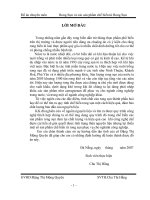Điều trị thương tổn mạch máu trong nhu mô thận bằng thuyên tắc mạch chọn lọc
Bạn đang xem bản rút gọn của tài liệu. Xem và tải ngay bản đầy đủ của tài liệu tại đây (484.01 KB, 5 trang )
������������������������������������������������������������������������������������������������������������������������������������������������������������������������������������������������������������������������������������������������������������������������������������������������������������������������������������������������������������������������������������������������������������������������������������������������������������������������������������������������������������������������������������������������������������������������������������������������������������������������������������������������������������������������������������������������������������������������������������������������������������������������������������������������������������������������������������������������������������������������������������������������������������������������������������������������������������������������������������������������������������������������������������������������������������������������������������������������������������������������������������������������������������������������������������������������������������������������������������������������������������������������������������������������������������������������������������������������������������������������������������������������������������������������������������������������������������������������������������������������������������������������������������������������������������������������������������������������������������������������������������������������������������������������������������������������������������������������������������������������������������������������������������������������������������������������������������������������������������������������������������������������������������������������������������������������������������������������������������������������������������������������������������������������������������������������������������������������������������������������������������������������������������������������������������������������������������������������������������������������������������������������������������������������������������������������������������������������������������������������������������������������������������������������������������������������������������������������������������������������������������������������������������������������������������������������������������������������������������������������������������������������������������������������������������������������������������������������������������������������������������������������������������������������������������������������������������������������������������������������������������������������������������������������������������������������������������������������������������������������������������������������������������������������������������������������������������������������������������������������������������������������������������������������������������������������������������������������������������������������������������������������������������������������������������������������������������������������������������������������������������������������������������������������������������������������������������������������������������������������������������������������������������������������������������������������������������������������������������������������������������������������������������������������������������������������������������������������������������������������������������������������������������������������������������������������������������������������������������������������������������������������������������������������������������������������������������������������������������������������������������������������������������������������������������������������������������������������������������������������������������������������������������������������������������������������������������������������������������������������������������������������������������������������������������������������������������������������������������������������������������������������������������������������������������������������������������������������������������������������������������������������������������������������������������������������������������������������������������������������������������������������������������������������������������������������������������������������������������������������������������������������������������������������������������������������������������������������������������������������������������������������������������������������������������������������������������������������������������������������������������������������������������������������������������������������������������������������������������������������������������������������������������������������������������������������������������������������������������������������������������������������������������������������������������������������������������������������������������������������������������������������������������������������������������������������������������������������������������������������������������������������������������������������������������������������������������������������������������������������������������������������������������������������������������������������������������������������������������������������������������������������������������������������������������������������������������������������������������������������������������������������������������������������������������������������������������������������������������������������������������������������������������������������������������������������������������������������������������������������������������������������������������������������������������������������������������������������������������������������������������������������������������������������������������������������������������������������������������������������������������������������������������������������������������������������������������������������������������������������������������������������������������������������������������������������������������������������������������������������������������������������������������������������������������������������������������������������������������������������������������������������������������������������������������������������������������������������������������������������������������������������������������������������������������������������������������������������������������������������������������������������������������������������������������������������������������������������������������������������������������������������������������������������������������������������������������������������������������������������������������������������������������������������������������������������������������������������������������������������������������������������������������������������������������������������������������������������������������������������������������������������������������������������������������������������������������������������������������������������������������������������������������������������������������������������������������������������������������������������������������������������������������������������������������������������������������������������������������������������������������������������������������������������������������������������������������������������������������������������������������������������������������������������������������������������������������������������������������������������������������������������������������������������������������������������������������������������������������������������������������������������������������������������������������������������������������������������������������������������������������������������������������������������������������������������������������������������������������������������������������������������������������������������������������������������������������������������������������������������������������������������������������������������������������������������������������������������������������������������������������������������������������������������������������������������������������������������������������������������������������������������������������������������������������������������������������������������������������������������������������������������������������������������������������������������������������������������������������������������������������������������������������������������������������������������������������������������������������������������������������������������������������������������������������������������������������������������������������������������������������������������������������������������������������������������������������������������������������������������������������������������������������������������������������������������������������������������������������������������������������������������������������������������������������������������������������������������������������������������������������������������������������������������������������������������������������������������������������������������������������������������������������������������������������������������������������������������������������������������������������������������������������������������������������������������������������������������������������������������������������������������������������������������������������������������������������������������������������������������������������������������������������������������������������������������������������������������������������������������������������������������������������������������������������������������������������������������������������������������������������������������������������������������������������������������������������������������������������������������������������������������������������������������������������������������������������������������������������������������������������������������������������������������������������������������������������������������������������������������������������������������������������������������������������������������������������������������������������������������������������������������������������������������������������������������������������������������������������������������������������������������������������������������������������������������������������������������������������������������������������������������������������������������������������������������������������������������������������������������������������������������������������������������������������������������������������������������������������������������������������������������������������������������������������������������������������������������������������������������������������������������������������������������������������������������������������������������������������������������������������������������������������������������������������������������������������������������������������������������������������������������������������������������������������������������������������������������������������������������������������������������������������������������������������������������������������������������������������������������������������������������������������������������������������������������������������������������������������������������������������������������������������������������������������������������������������������������������������������������������������������������������������������������������������������������������������������������������������������������������������������������������������������������������������������������������������������������������������������������������������������������������������������������������������������������������������������������������������������������������������������������������������������������).
Chuyên Đề Ngoại Khoa
Nghiên cứu Y học
KẾT LUẬN
Tắc mạch chọn lọc là biện pháp ít xâm lấn
rất hữu hiệu để điều trị biến chứng chảy máu
do các thương tổn mạch máu trong thận sau
các thương tổn do y thuật và không do y thuật
của nhu mô thận.
TÀI LIỆU THAM KHẢO
1.
2.
3.
4.
5.
6.
7.
8.
9.
10.
11.
12.
13.
14.
15.
Albani JM, Novick AC (2003). Renal artery pseudoaneurysm
after partial nephrectomy: three case reports and a literature
review. Urology, 62(2): 227-31.
Corr P, Hacking G (1991). Embolization in traumatic
intrarenal vascular injuries. Clin Radiol, 43: 262–264.
El-Nahas AR, Shokeir AA, El-Assmy AM, Mohsen T, Shoma
AM, et al. (2007). Post-percutaneous nephrolithotomy
extensive hemorrhage: a study of risk factors. J Urol, 177: 576579.
Fisher RG, Ben-Menachem Y, Whigham C (1989). Stab
wounds of the renal artery branches: angiographic diagnosis
and treatment by embolization. AJR Am J Roentgenol, 152:
1231–1235.
Gupta M, Bellman GC, Smith AD. (1997). Massive
hemorrhage from renal vein injury during percutaneous renal
surgery: endourological management. J Urol, 157: 795-797.
Heyns CF, van Vollenhoven P (1992). Increasing role of
angiography and segmental artery embolization in the
management of renal stab wounds. J Urol,147: 1231–1234.
Hunter Wessells, Donald Suh, James R. Porter, Frederick
Rivara, Ellen J. MacKenzie, Gregory J. Jurkovich and Avery B.
Nathens (2003). Renal Injury and Operative Management in
the United States: Results of a Population-Based Study. J
Trauma, 54: 423–430.
Jain R, Kumar S, Phadke RV, Baijal SS, Gujral RB. (2001).
Intra-arterial embolization of lumbar artery pseudoaneurysm
following percutaneous nephrolithotomy. Australias Radiol,
45: 383-386.
JW McAninch, RA Santucci (2002). Genitourinary Trauma.
Walsh: Campbell's Urology, 8th ed, 3707- 3715. Elsevier.
Massulo-Aguiar MF, Campos CM, Rodrigues-Netto N, Jr.
(2006). Intrarenal pseudoaneurysm after percutaneous
nephrolithotomy. Angiotomographic assessment and
endovascular management. Int Braz J Urol, 32: 440-442.
Richard S. Lee, and James R. Porter (2003). Traumatic Renal
Artery Pseudoaneurysm: Diagnosis and Management
Techniques. J Trauma, 55: 972–978.
Richstone L, Reggio E, Ost MC, Seideman C, Fossett LK, et al.
(2008). First Prize (tie): Hemorrhage following percutaneous
renal surgery: characterization of angiographic findings. J
Endourol 22: 1129-1135.
Sampaio FJ, Aragao AH. (1990). Anatomical relationship
between the intrarenal arteries and the kidney collecting
system. J Urol, 143: 679-681.
Soyer P, Desgrippes A, Vallee JN, Rymer R. (2000). Intrarenal
pseudoaneurysm after percutaneous nephrostolithotomy:
endovascular treatment with N-butyl-2-cyanoacrylate. Eur
Radiol, 10: 1358.
Srivastava A, Singh KJ, Suri A, Dubey D, Kumar A, et al.
(2005).
Vascular
complications
after
percutaneous
173
Nghiên cứu Y học
16.
174
Y Học TP. Hồ Chí Minh * Tập 15 * Phụ bản của Số 1 * 2011
nephrolithotomy: are there any predictive factors? Urology,
66: 38-40.
Stoller ML, Wolf JS, Jr., St Lezin MA. (1994). Estimated blood
loss and transfusion rates associated with percutaneous
nephrolithotomy. J Urol, 152: 1977-1981.
17.
White EC, Smith AD. (1984). Percutaneous stone extraction
from 200 patients. J Urol, 132: 437-438.
Chuyên Đề Ngoại Khoa









